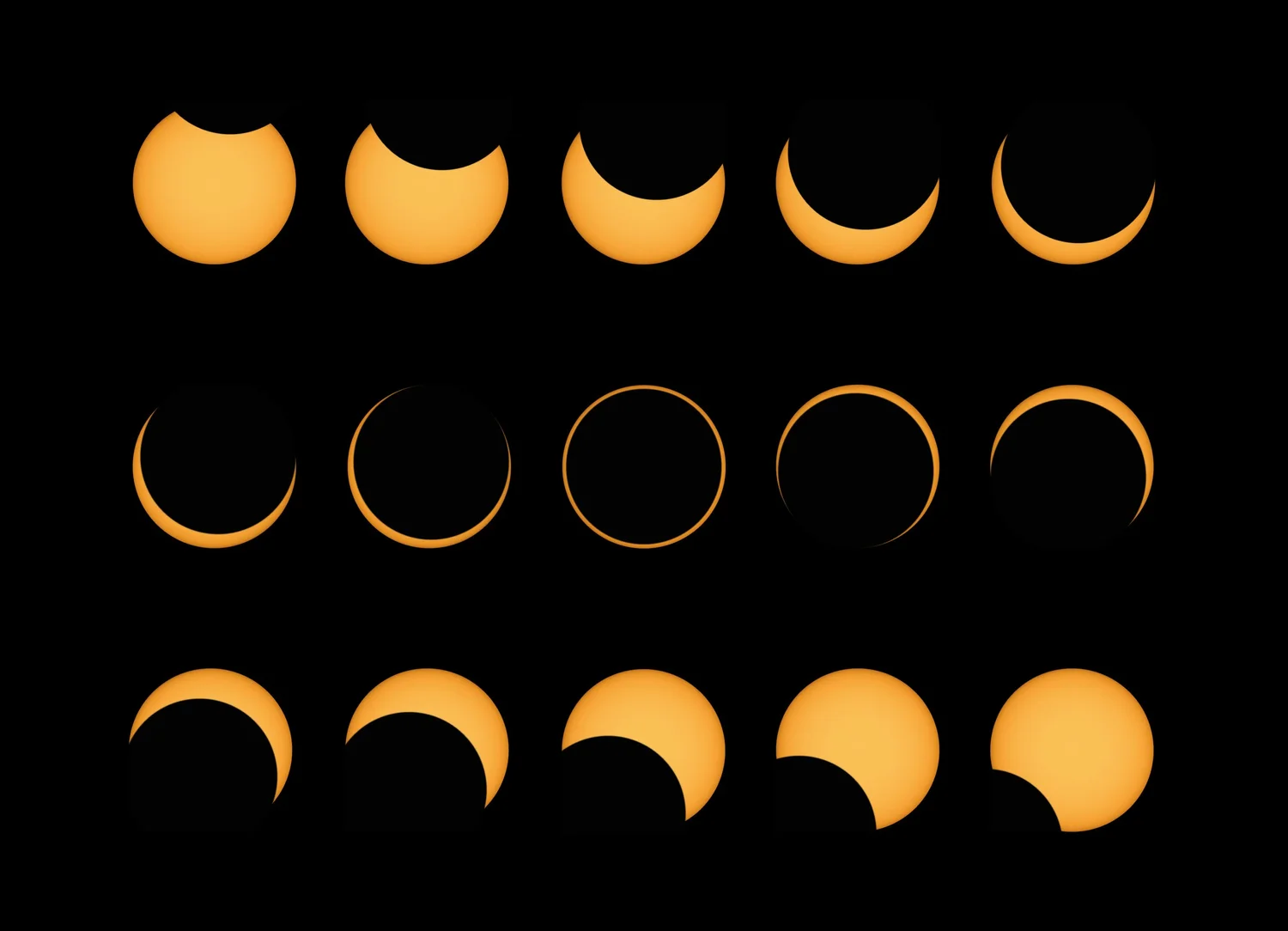atypdev | Post | Solar Eclipse Info
<< go back
Info about the October 14th 2023 solar eclipse as visible from my home in Colorado.

Key Info:
| . . . . . . . . . . . . . . . In the Greater Central Colorado Area . . . . . . . . . . . . . . . |
| > Only 80% of the sun will be obstructed by the moon |
| > It starts at around 15:10 UT |
| > It ends at around 18:05 UT |
| > It reaches its maximum coverage at around 16:35 UT |
| > The maximum coverage only lasts for about 5 minutes. |
| ⚠ There is no time when it is safe to look directly at the Sun without using a special-purpose solar filter. ⚠ |
General Overview:
The Saturday, Oct. 14, 2023, annular solar eclipse will cross North, Central, and South America. It will be visible in parts of the United States, Mexico, and many countries in South and Central America.
In Colorado, the path of the eclipse does not intersect with much of the state, so we will receive only 80% occlusion.
The magnitude of the eclipse (how much of the sun gets covered) is 0.8, and the ratio between the sun and the moon (how big the sun looks compared to the moon) is 0.9, aka the moon is 90% the size of the sun.


How to safely view?:
WARNING: There is no time when it is safe to look directly at the Sun without a filter!
With a filter:
Use special-purpose solar filters, such as “eclipse glasses” or handheld solar viewers.

According to the American Astronomical Society’s “How to View a Solar Eclipse Safely”:
- Always inspect your solar filter before use; if scratched, punctured, torn, or otherwise damaged, discard it. Read and follow any instructions printed on or packaged with the filter.
- Always supervise children using solar filters.
- If you normally wear eyeglasses, keep them on. Put your eclipse glasses on over them, or hold your handheld viewer in front of them.
- Stand still and cover your eyes with your eclipse glasses or solar viewer before looking up at the bright Sun. After looking at the Sun, turn away and remove your filter — do not remove it while looking at the Sun.
- Do not look at the uneclipsed, partially eclipsed, or annularly eclipsed Sun through an unfiltered camera, telescope, binoculars, or other optical device.
- Similarly, do not look at the Sun through an unfiltered camera, telescope, binoculars, or any other optical device while using your eclipse glasses or handheld solar viewer in front of your eyes — the concentrated solar rays could damage the filter and enter your eyes, causing serious injury.
- Seek expert advice from an astronomer before using a solar filter with a camera, telescope, binoculars, or any other optical device; note that solar filters must be attached to the front of any telescope, binoculars, camera lens, or other optics.
AAS - Eye Safety
Without a filter:
“Cross the outstretched, slightly open fingers of one hand over the outstretched, slightly open fingers of the other, creating a waffle pattern. With your back to the Sun, look at your hands’ shadow on the ground. The little spaces between your fingers will project a grid of small images on the ground, showing the Sun as a crescent during the partial phases of any solar eclipse or as a ring during the annular phase of an annular eclipse. Or just look at the shadow of a leafy tree during a partial or annular eclipse; you’ll see the ground dappled with crescent or ring-shaped Suns projected by the tiny spaces between the leaves.”
AAS - Eye Safety
Resources:
EclipseWise.com - Fred Espenak, retired NASA Astrophysicist
Solar Eclipse Maestro - Xavier Jubier
Great American Eclipse